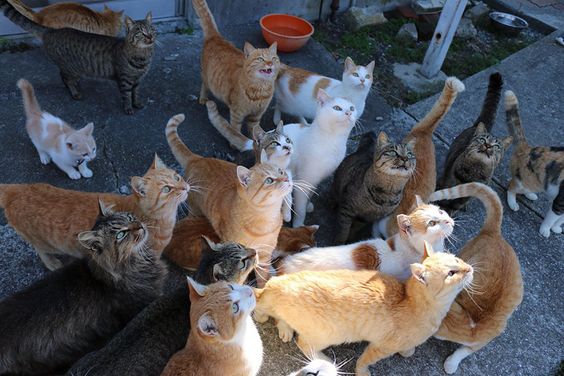STUFF ABOUT CATS....
Cat, (Felis catus), domesticated member (felid) of the family Felidae. The family is generally divided between cats from the subfamily Pantherinae, which roar (including lions, tigers, and leopards), and cats from the subfamily Felinae, which purr instead (including cougars, bobcats, and domestic cats). According to the latest research, purring likely stems from a special pad within the folds of a cat’s vocal cords, which adds an additional layer of fatty tissue that enables the folds to vibrate (purr) at low frequencies. Domestic cats are characterized by retractable claws, powerful bodies, acute senses, long tails, and specialized teeth adapted for hunting prey.
Origin and history of cats
After the nonavian dinosaurs became extinct, mammals became the dominant life forms. The first felinelike mammal, Proailurus, evolved about 30 million years ago. It is thought that all true cat species evolved from this small civetlike predator. Cats that resemble today’s felids first appeared in the early Pliocene Epoch (5.3 to 3.6 million years ago), and they have continued into present times with remarkably few changes. The original design of fang and claw, flexible backbone, muscular strength, and agility allowed felids to survive and adapt to the changes brought by each new era. Adaptations have occurred with changes in prey, but the basic body type has stayed the same.
Domestication
It is noteworthy that the ancestors of the other common household pet, the dog, were social animals that lived together in packs in which there was subordination to a leader, and, over time, the dog has readily transferred its allegiance from pack leader to human master. The cat, however, has not yielded as readily to subjugation. Moreover, the bodies, abilities, and temperaments of dogs have changed radically in the more than 30,000 years since they were domesticated, while domestic cats are almost identical to their wild counterparts. Cats show little of the infantilization of facial features seen in dogs and have retained much of their independent nature. In fact, the felid generally thought to be the closest ancestor of the domestic cat is a small wildcat native to the Middle East and Africa (Felis silvestris lybica) that is genetically virtually identical to domestics and readily interbreeds with them, so much so that, in some areas, the wildcat is in danger of ceasing to exist as a pure species. Consequently, cats have retained their independent nature and can thrive as predators in the wild today. This is why feral cats abound and why experts do not consider the cat to be a fully domesticated animal.
BACK